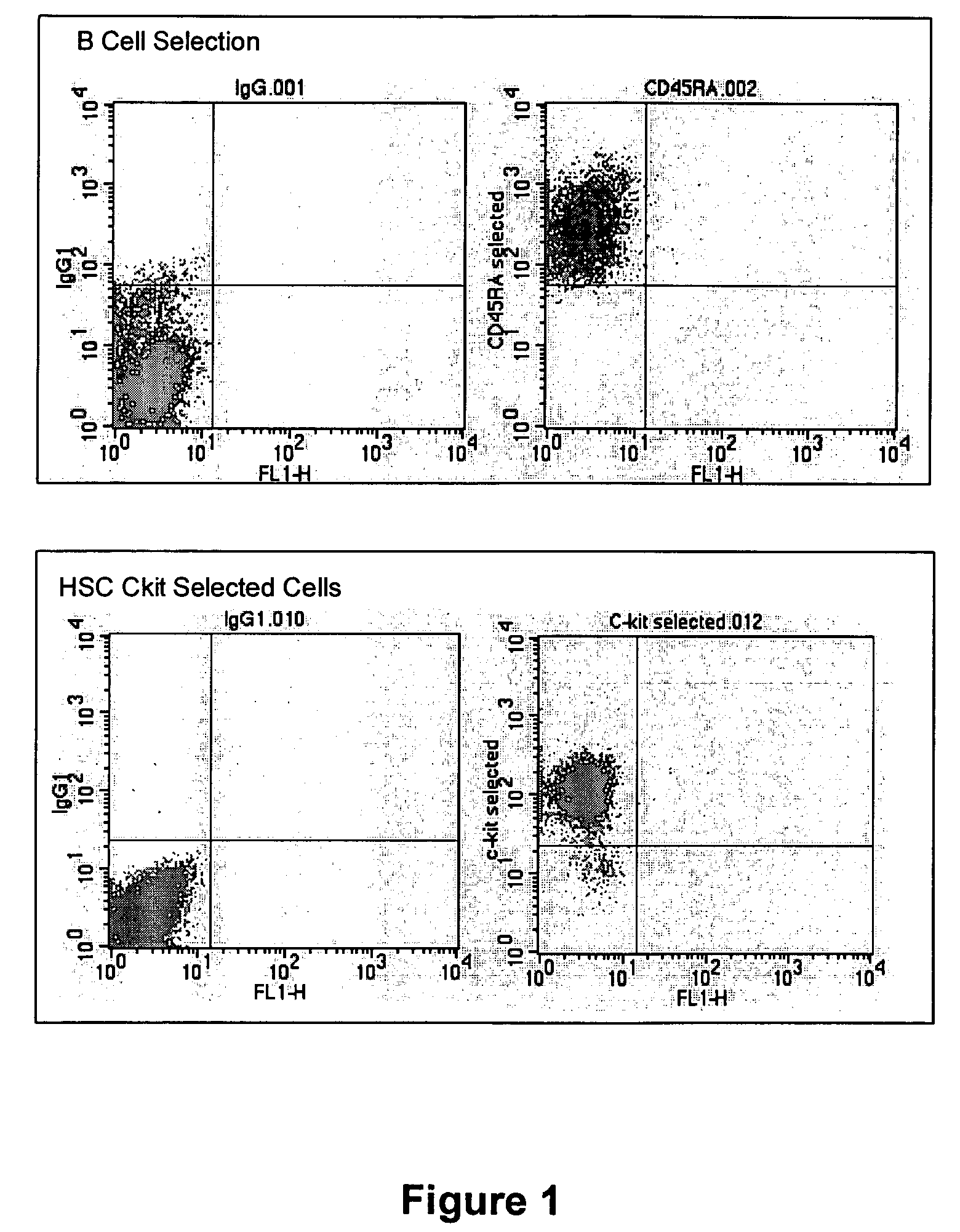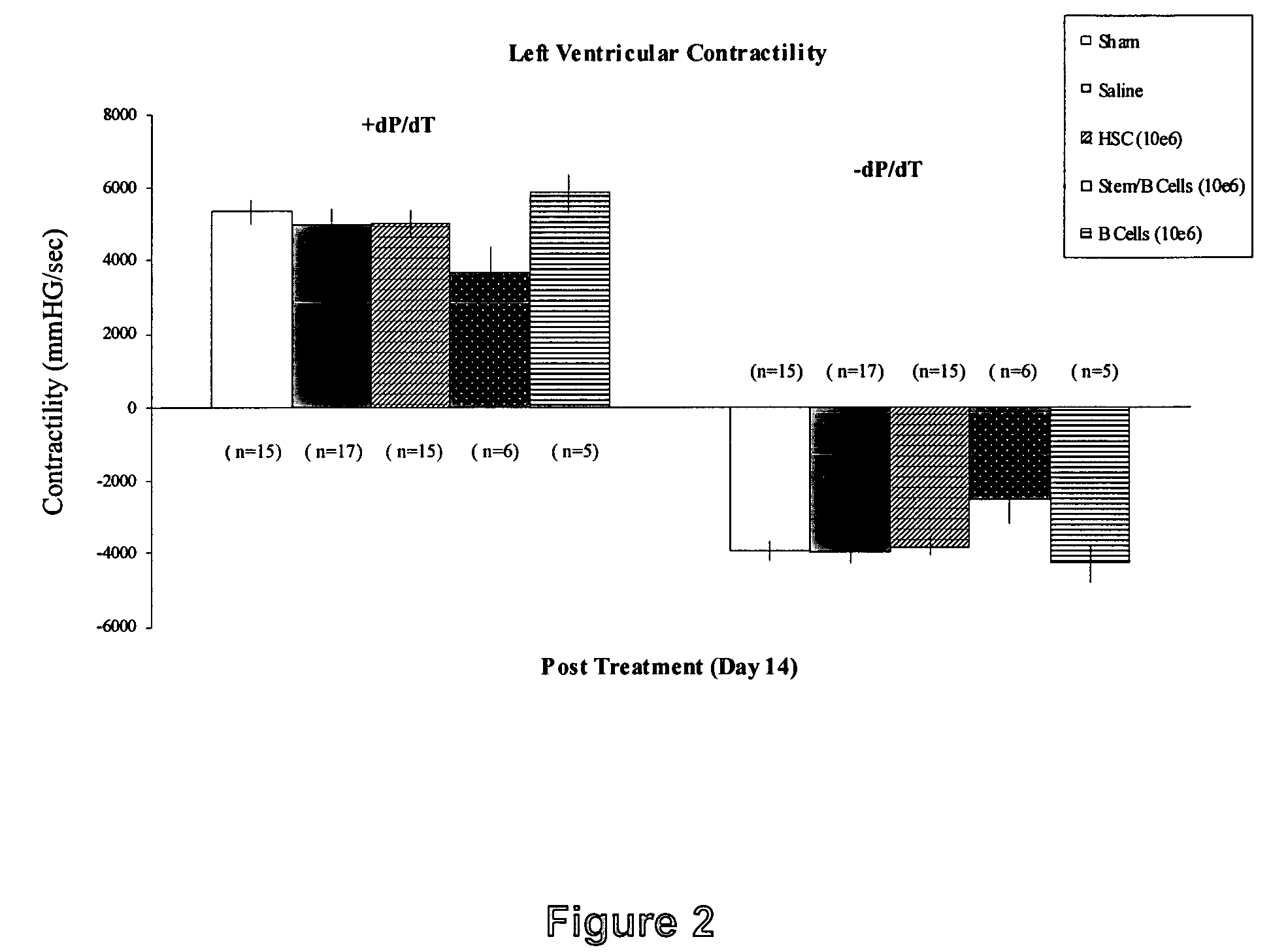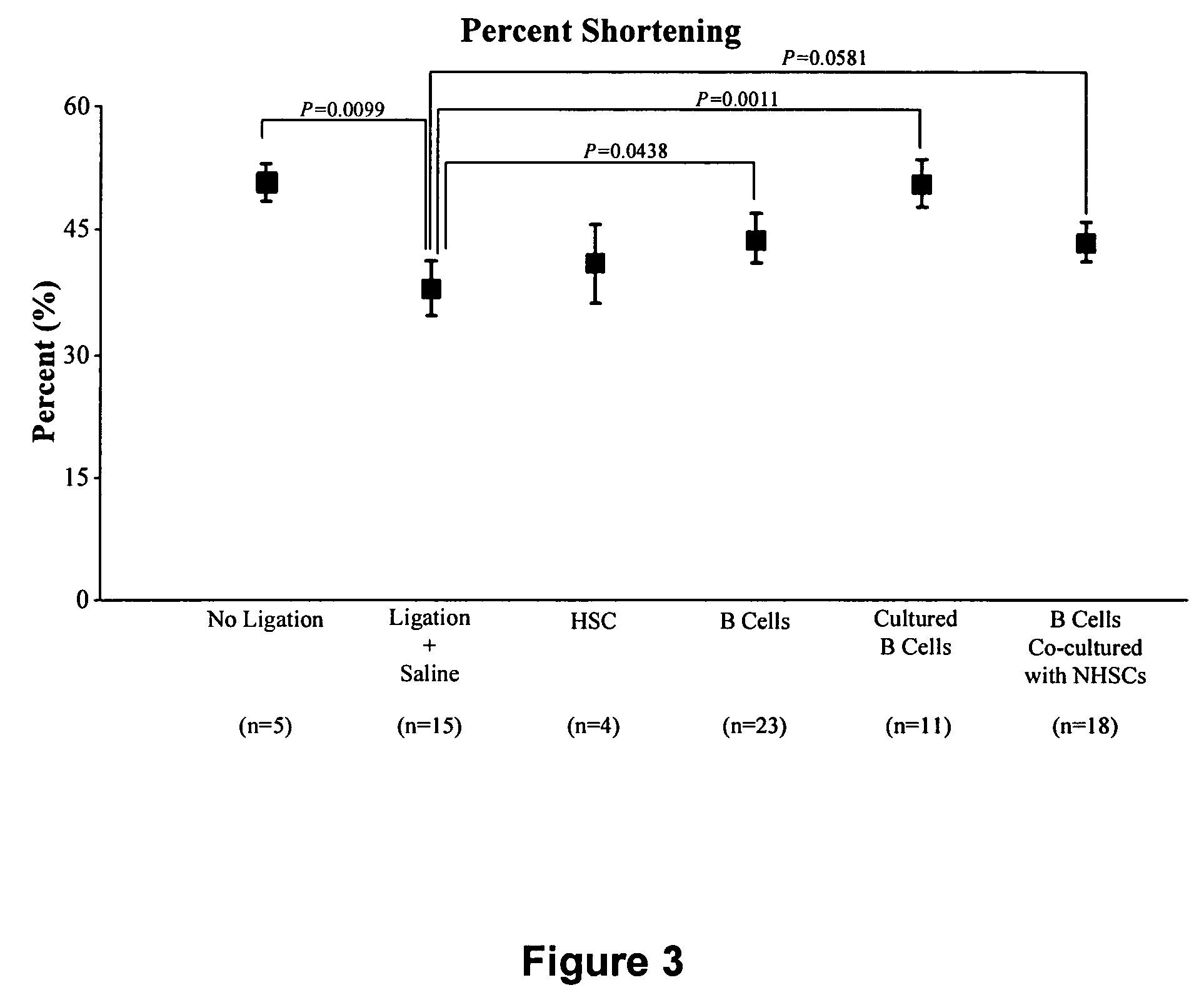Recovery of tissue function following administration of B cells to injured tissue
a tissue function and b cell technology, applied in the field of tissue function recovery following administration of b cells to injured tissue, can solve the problems of major health problems, loss of tissue function, disease or accident, and significant degradation of cardiac function, so as to improve the function and quality of life of injured tissue, reduce morbidity and mortality, and enhance the effect of function and quality of li
- Summary
- Abstract
- Description
- Claims
- Application Information
AI Technical Summary
Benefits of technology
Problems solved by technology
Method used
Image
Examples
example 1
Recovery of Cardiac Function Following Ischemia in Rats
[0090]Bone marrow cells were harvested from donor rats and separated into stem cell and B cell populations and directly injected into infarcted recipient rat hearts. These animals are extremely in-bred and are often used in this way to substitute for the human autologous situation. Baseline and two-week follow-up echocardiography was performed to measure left ventricular end systolic and diastolic diameter and percent shortening (percent shortening is the heart's short-axis “stroke diameter” (difference between end-diastolic and end-systolic diameters) divided by the diameter in diastole. This measurement accurately reflects global left ventricular function and is highly correlated with ejection fraction.
[0091]A normal heart with normal wall motion and contractility will have a greater percent shortening value compared to a dysfunctional heart in which contractility is impaired and shortening is reduced). Hemodynamic indices inc...
example 2
Treatment of a Human Patient Following Myocardial Infarction
[0101]A 55 year old male visits his cardiologist complaining of angina. An arteriogram reveals 90% blockage in the left anterior descending coronary artery. During a treadmill test the patient suffers an acute myocardial infarction and survives. Subsequent-tests reveal that a portion of the left ventricular myocardium is damaged from the infarction.
[0102]The patient undergoes open-chest surgery to bypass the left anterior descending coronary artery with a saphenous vein graft. During the surgery, the infarcted area is visualized. Approximately 200 ml of bone marrow are aspirated from the iliac crest and processed to separate out the subpopulation of CD19+ cells. Sixteen injections of these bone marrow derived B cells at a concentration of about 100 million cells per 1.6 ml are made directly into the ischemic myocardial tissue in a total volume of about 100 ul per injection, using a 27 gauge needle.
[0103]Following completion...
example 3
Treatment of a Human Patient Following Myocardial Infarction
[0104]A 62 year old female patient with an infarction of the right coronary artery suffers ischemic damage. B cells are obtained from the patient's bone marrow and cultured overnight before administration of the cells (1000 ul containing 120 million cells). The patient is placed on a regimen of drugs using a protocol similar to what is provided to a post infarction patient by one of ordinary skill in the art. The next day, the patient's coronaries are cannulated with a guide catheter introduced at the groin via the femoral artery. A PTCA balloon is introduced through this catheter into the coronaries and inflated with sufficient pressure to occlude coronary blood flow. The PTCA wire is removed and the cells are then injected through the balloon's wire lumen and delivered distal to the inflated balloon. After approximately 90 seconds, the balloon is deflated and the procedure is concluded. Following completion, the patient i...
PUM
| Property | Measurement | Unit |
|---|---|---|
| size | aaaaa | aaaaa |
| volumes | aaaaa | aaaaa |
| volumes | aaaaa | aaaaa |
Abstract
Description
Claims
Application Information
 Login to View More
Login to View More - R&D
- Intellectual Property
- Life Sciences
- Materials
- Tech Scout
- Unparalleled Data Quality
- Higher Quality Content
- 60% Fewer Hallucinations
Browse by: Latest US Patents, China's latest patents, Technical Efficacy Thesaurus, Application Domain, Technology Topic, Popular Technical Reports.
© 2025 PatSnap. All rights reserved.Legal|Privacy policy|Modern Slavery Act Transparency Statement|Sitemap|About US| Contact US: help@patsnap.com



